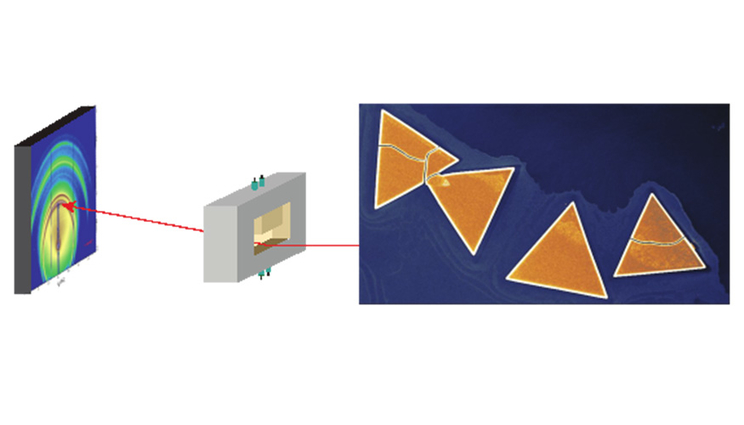Probing silver nanocrystal superlattices
Typically, superlattices—faceted crystals composed of nanocrystal building blocks—have been made using slow evaporative techniques that often take days to weeks to form highly crystalline solids. This process is difficult to control, which has made it hard to systematically tune film properties and has hindered quantitative study of the assembly process. To overcome these issues, LLNL researchers have developed a fast and facile technique that uses electric fields to deposit nanocrystals. In the past, researchers have demonstrated deposition of nanocrystal films but not the generation of highly ordered 3D superlattices.
In a paper published in Nature Communications, LLNL researchers Yixuan Yu, Babak Sadigh (PHYS), and Christine Orme (MSD), with UCLA graduate student Dian Yu, used in situ x-ray scattering at the Advanced Photon Source to track the nucleation and growth of silver nanocrystal superlattices from a colloidal suspension. As anticipated, they found that the electric field drives nanocrystals towards the surface creating a concentration gradient that leads to nucleation and growth of superlattices; but surprisingly, the field also sorts the particles according to size. In essence, the electric field both concentrates and purifies the nanocrystal solution during growth.
By scanning the x-ray beam, they were able to map out the concentration and nanocrystal size profiles as functions of space, time, and applied field, allowing them to calculate important parameters for crystal growth such as the nanocrystal flux and the polydispersity of the crystallizing solution. Ultimately, growth parameters were used to systematically tune film properties such as island size and lattice constant. Overall, by coupling in situ space- and time-resolved small angle x-ray scattering with electric field-driven assembly, the authors showcase a well-quantified, controllable path for making highly-ordered 3D nanocrystal superlattices and a means to study the onset of nucleation.
This project was funded by the Laboratory Directed Research and Development Program (16-ERD-033).
[Y. Yu, D. Yu, B. Sadigh, and C.A. Orme, Space- and time-resolved small angle X-ray scattering to probe assembly of silver nanocrystal superlattices, Nature Communications 9, 4211 (2018), doi: 10.1038/s41467-018-06734-9.]
Tags
Laboratory for Energy Applications for the FutureAdvanced Materials and Manufacturing
Materials Science
Physics
Physical and Life Sciences
Featured Articles








